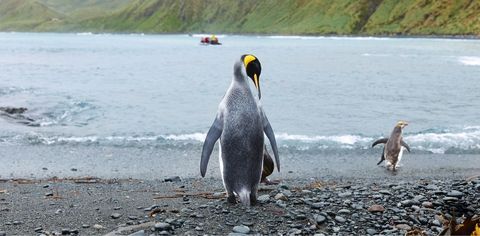
The Rugged Islands known as the Subantarctics have attracted hardy travellers for decades. Aboard a Ponant cruise, this writer discovers a more elevated way to visit this wild world, where penguins, seals and other captivating creatures rule the roost. Text by Simon Willis, photographs by Peter Tarasiuk
Discovering the many secrets of Macquarie Islands on a cruise
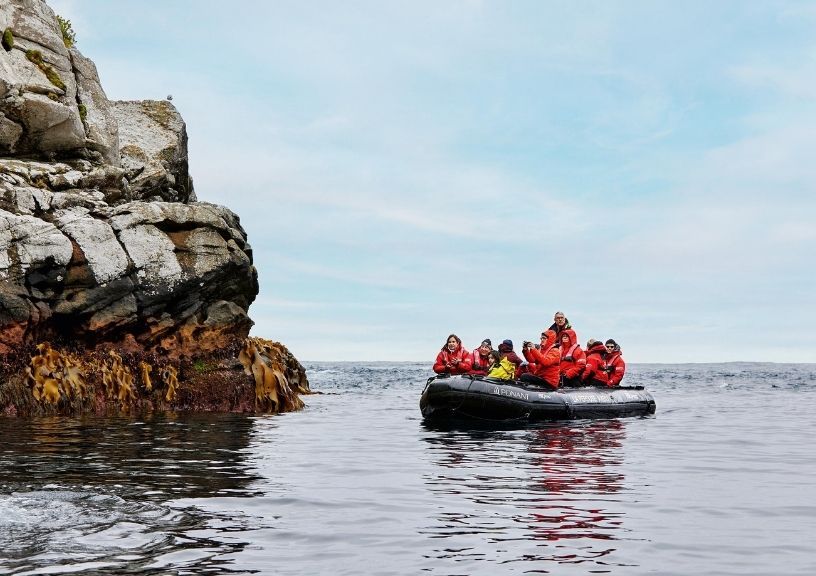
Observing wildlife often requires a keen eye: a rare bird or a big cat is typically gone as quickly as it arrives. Not so on Macquarie Island, a rugged, 127-square-kilometre strip of rock halfway between New Zealand and Antarctica. As I set foot on one of its black-sand beaches one blustery January morning, I was plunged into a bustle of weirdly wobbly and outrageously coiffed life forms jostling all around me and conversing in a raucous language of honks, moans, grunts, and clacks. To my right, several pairs of sparring elephant seals were rearing up to nip each other’s necks. To my left, an aged male of the same species lay dying in the surf. And at my feet a royal penguin, its bright yellow crest plastered to its head like Donald Trump’s hair after a shower, pecked at my boots.
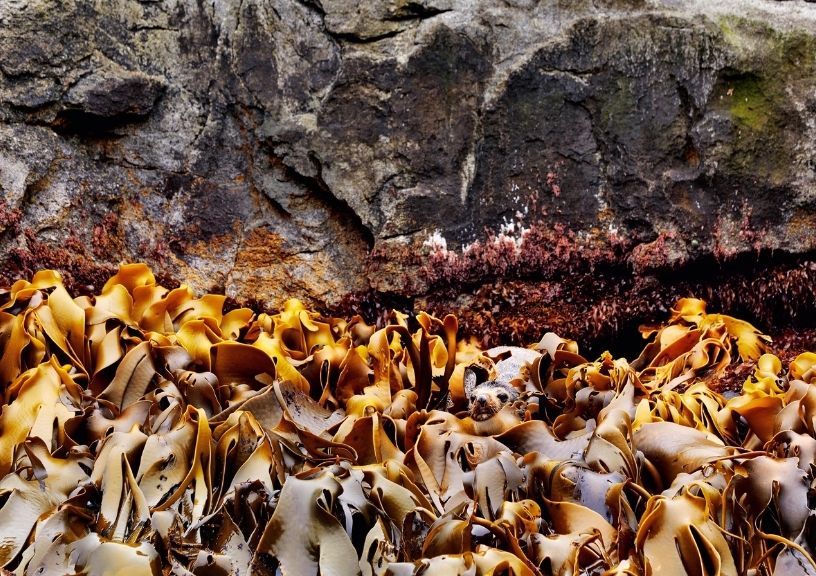
Macquarie was the first stop on a two-week tour of the Subantarctic Islands and the fjords of New Zealand’s South Island. The Subantarctics, or Subs for short, include Macquarie Island, Campbell Island, the Auckland Islands, and a trio of jagged outcrops called the Snares—so named because of the hazard they once posed to whaling and sealing ships. (With the exception of Macquarie, which belongs to Australia, all of the islands we visited are officially part of New Zealand.) Separated by hundreds of miles of open ocean from the mainland and from one another, the Subs are among the most isolated places on earth. Because they’re too rough and exposed to land a plane on, the only way to reach them is by sea. To protect their ecosystems, whose biodiversity is comparable to that of the Galápagos, visitor numbers are tightly controlled. In 2018, more than 2,75,000 people visited the Galápagos. Fewer than 430 landed on the Subs.
I had arrived at Macquarie two days earlier on board Le Lapérouse, a small ship, more yacht than cruise liner, that’s named after an explorer who went missing in 1788 while exploring the Solomon Islands in the South Pacific. Outfitted for 140 passengers, it is owned and operated by Ponant, a French cruise company that specialises in expeditions to far-flung places. Among my fellow travellers were many veterans of trips to Antarctica or the Northwest Passage, who were lured to the Subs by their remote location and their teeming wildlife. (This includes six species of penguin, five species of seal and sea lion, and 11 species of albatross.) In their company, I was the odd one out: aside from a few brisk crossings of the English Channel, I had never before been at sea.
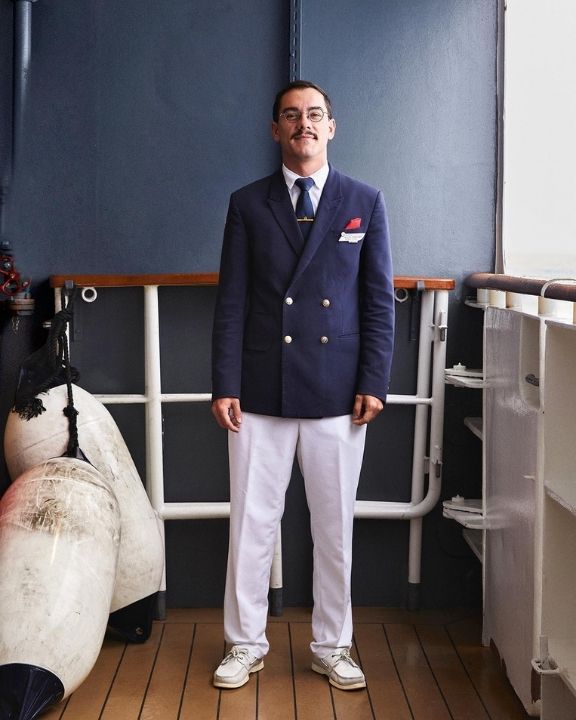
Starting with a journey across the Southern Ocean is the nautical equivalent of being weaned on hard liquor. We set out on the nearly 1,609-kilometre, three-day passage to Macquarie from Hobart, Tasmania, which was basking in hot summer sunshine. But no sooner had we left shore than we were trying to outrun a storm. Our route south took us through the Roaring Forties and into the Furious Fifties, latitudes named for the ferocity of their winds and waves. By lunchtime on the second day, the weather was licking the water into whitecaps. By early evening it was gusting at 167 kilometres per hour and the boat was crashing through a 4.5-metre swell.
When we reached our anchorage at Macquarie, the worst of the weather had passed. But the mist remained thick, the swell considerable, and the Australian warmth had given way to Antarctic chill. Through the clouds and rain we could see an Australian research station, a collection of huts and houses from which a hardy team of scientists monitor the wildlife, some of which was already swimming out to greet us. Leaping through the water were squads of king penguins, the yellow flashes on their beaks and breasts beaming against the dark water. But there was no chance of us going ashore: the sea was too rough for the inflatable Zodiacs used to ferry passengers between the ship and dry land. All we could do was admire the island, treeless and covered in tussock grass, and wait for a window in the weather.
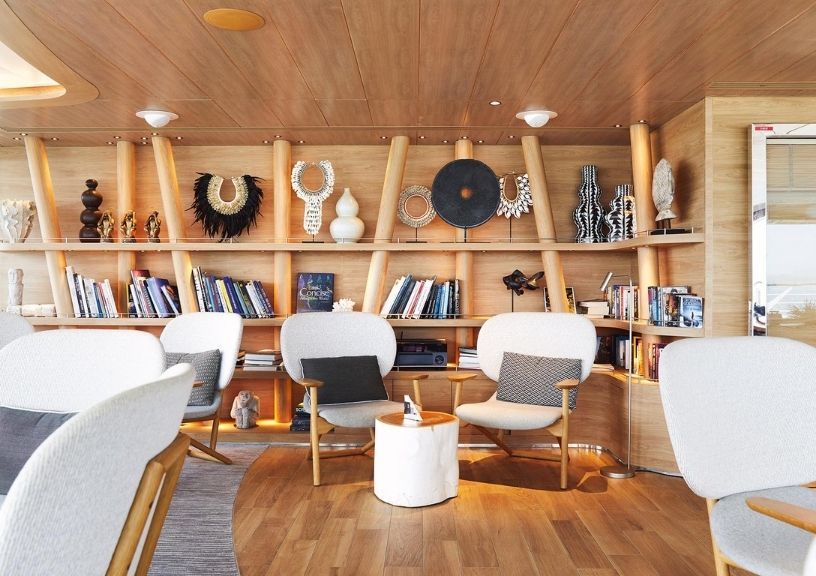
This was the first of several lessons in the implacability of the Southern Ocean, whose violence has a habit of undoing even the best-laid plans. For the next two days we circled the island listlessly, checking potential landing sites to no avail. One passenger, a woman from Sydney, had been to Macquarie three times. The elements had thwarted her on each occasion, and she had never succeeded in setting foot there. She began to fear that this would be her fourth missed opportunity.
Then, early one morning, the captain went on the public address system to announce that the waves had abated on Sandy Bay, a beach on the island’s east side. As we made our way to shore in the Zodiacs, a light-mantled sooty albatross, pale grey with white rings around its eyes, flew up behind us and hovered over the boat before tipping its wings and banking out over the sea. The tranquillity of the bird was a counterpoint to the maelstrom of the shoreline. Nothing quite prepares you for the sensory assault of landing on Macquarie—the great animal chorus rising from the beach, the acrid stench of guano from the penguin colonies along the shore, and the belching and farting of the elephant seals, who lie in dense throngs like packs of pugnacious sausages.
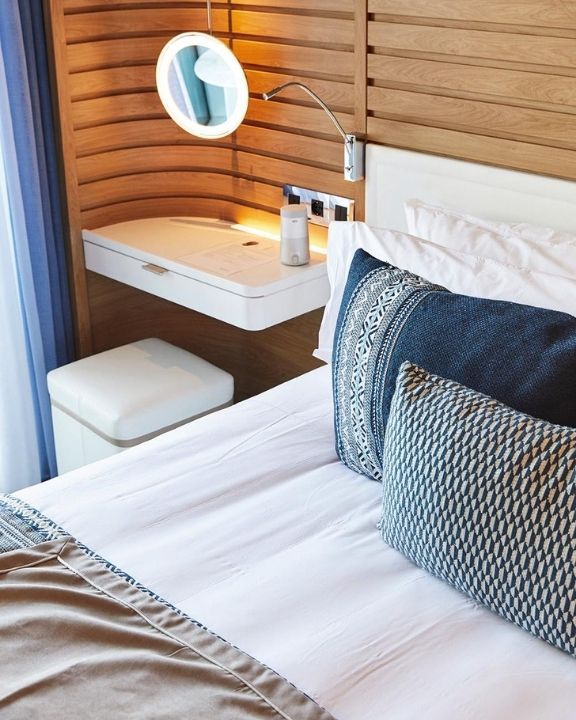
Making my way along the sand, I headed to a hill above the beach, where, for a moment, I inhaled the herbal smell of the valley ahead of me, which was full of Macquarie Island cabbages, one of the so-called mega-herbs endemic to the Subs. Then the whack of ammonia returned as I reached a colony of some 70,000 royal penguins.
Among the garrulous adults were hundreds of fluffy brown chicks huddled together in crèches while their parents were away at sea. Above them a pair of skuas—large, menacing birds with a taste for penguin flesh—circled, scouring the ground for vulnerable youngsters. After leaving the royals I went down to the water and sat on a rock to observe a colony of penguins along the shore. These were kings, calmer and more aloof than the royals, going through their annual molt, their stumpy bodies a mess of patchy old plumage being pushed up and out by new growth. Others, already freshly feathered, marched into the sea; when they came out, the water slid down their bodies like rain off a new car. As I watched the birds, a baby fur seal ambled up the beach among them and clambered awkwardly onto the rock next to mine. Just a few feet away, the seal eyed me and sniffed the air. Then, apparently uninhibited by the interloper, it lowered its head contentedly and began to scratch itself against the stone.

The Subantarctics are in a process of recovery: their isolation has been no obstacle to the predations of man. Macquarie, like our next stop, Campbell Island, was discovered in 1810 by Frederick Hasselborough, an Australian who sailed south in search of new sealing grounds. He was followed by a New Zealander, Joseph Hatch, a rapacious merchant of penguin oil who, between 1890 and 1920, killed as many as three million birds on Macquarie, boiling them down in giant kettles on the beach, some of which remain there as rusty relics of the slaughter. With the sailors came rats, cats, and rabbits, which decimated native species by eating eggs and hatchlings and devouring plants.
Over the past few decades, conservationists have worked to eradicate these invasive mammals and return the Subs to their natural state. On the beach at Macquarie, I met Keith Springer, one of the naturalists on board Le Lapérouse. Springer, a tough-looking Kiwi with a salt-and-pepper beard, was one of the managers of the programme. They’d seen results immediately, he told me. The grey petrel, which had not bred on Macquarie for more than a century, began to do so the year the island’s programme was completed. “That hillside was completely bare before we started,” he said, looking at the cliff above the penguin colony, where the vegetation had been stripped by rabbits. Now it was a verdant profusion of tussock grass and cabbages.
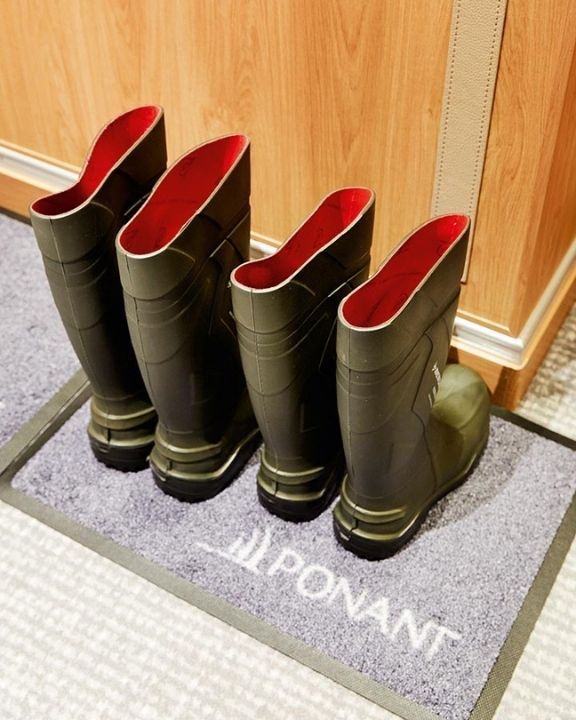
To keep it that way, we were subjected to a laborious but necessary daily process. Before we stepped foot on any of the islands, we took our clothes, bags, boots, and tripods to the ship’s lounge to be checked by Chrissy Wickes and the team of naturalists. Wickes works for the New Zealand Department of Conservation and was on board to act as the guardian of the islands. She spent many of her afternoons with tweezers in hand or the nozzle of a vacuum cleaner, plucking and sucking bits of grass or seed from patches of Velcro and the tread of our boots so that we didn’t transport invasive plants from the outside world to the Subs, or from one island to another.
Campbell Island is another great success story. We anchored early one morning in Perseverance Harbour, a long inlet named after Hasselborough’s ship, where he later drowned in a squall. The landscape, with its dun-coloured slopes sweeping up to rocky escarpments, has something of the Scottish Highlands about it, and indeed it was Scots who came here to raise sheep in the late 19th century. They were used to a life of rugged isolation, but the island proved too much even for them: the last farmer abandoned the operation in 1931, leaving his flock to roam wild. Their grazing destroyed the habitat of endemic birds, such as the snipe and the teal, which were long thought to be extinct on the island, as well as Campbell’s population of southern royal albatross, which was severely depleted.
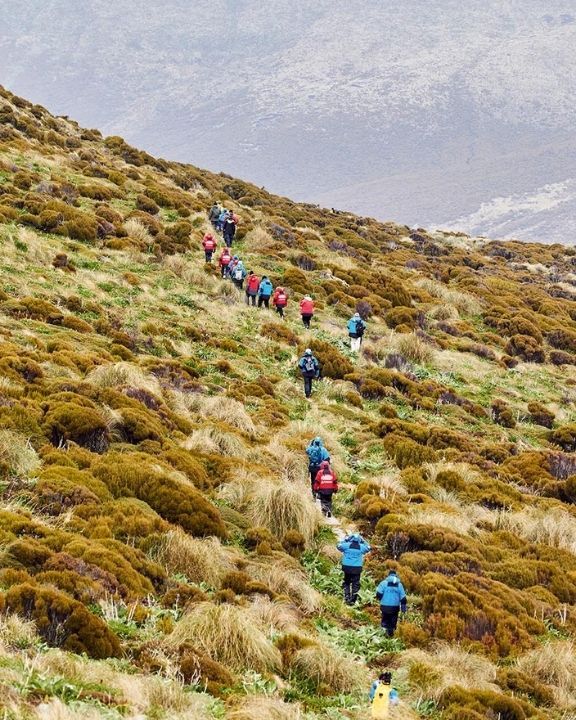
It took more than 50 years to get rid of the sheep, but today Campbell is free of invasive animals, and the flora and fauna are recovering. The landscape, lusher than that of Macquarie, is home to several varieties of mega-herbs, and our path across the island was lined with the purple flowers of Campbell Island carrots. At one point, Patrick Horgan, the Australian naturalist leading our group, stopped, pointed, and whispered, “Snipe.” There in the tussock was a brief excitement of feathers. “That’s the bird they thought was extinct!” Horgan said delightedly. Along with the teal, it has come back to Campbell.
The hill we were climbing was spotted with white blobs: nesting southern royal albatross, their feathers ruffled by the wind and their beaks buried in their plumage. There are now 8,500 breeding pairs, which spend most of their lives on the wing at sea but return to the island of their birth to breed. As we passed, they began to point their beaks to the sky and clack their bills. “They are calling to each other,” Horgan said. “Some of them might be seeing each other for the first time in two years.”
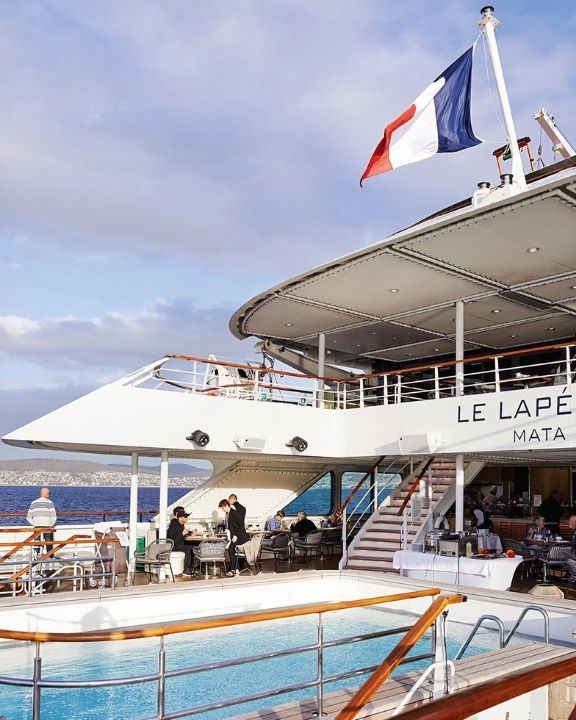
Ponant is one of a few cruise companies that make trips to the Subantarctics. One of the others, Heritage Expeditions, uses repurposed Russian icebreakers—tough, utilitarian craft built in the 1980s. Ponant does things differently. Le Lapérouse, built in 2017, is the first of six new expedition ships tricked out like boutique hotels. Our cabins, decorated in elegant shades of oatmeal and blue, came with balconies and flat-screen TVs. In the bow of the ship is a theatre where the naturalists gave lectures on seabirds and weather systems and where, in the evenings, you could watch a programme of sea-related films. Downstairs, in the bowels of the ship, is the Blue Eye, a bar with underwater windows through which you can look for penguins torpedoing past. (All I saw was sea.)
But the chief comfort on board is the food. A team of French chefs produced mountains of lobster salad and coquilles St. Jacques, cold cuts and smoked fish, pineapple financier and tarte aux pêches, and funky French cheese. The experience of eating in the dining room occasionally turned into a comedy of manners. As the wind howled and the ship rolled, crashes would emanate from the kitchen and smartly uniformed waiters wobbled between the tables, trying to keep the plates in the air.
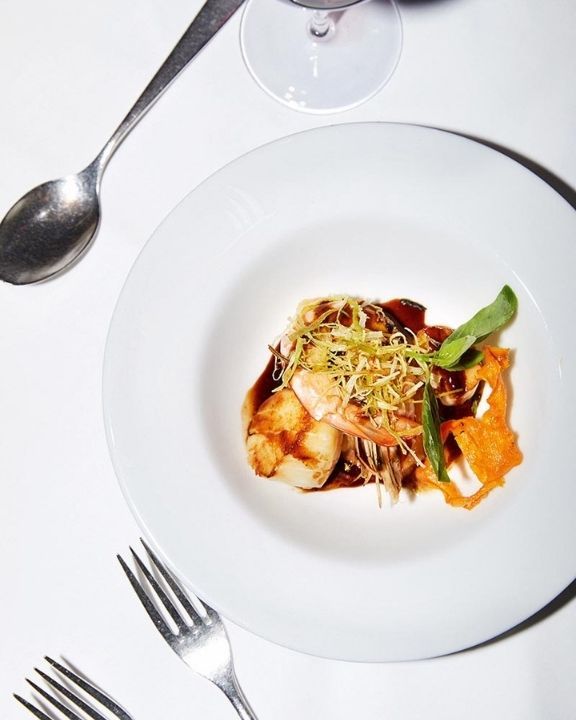
One lunchtime I was tucking in to a plate of curried lamb when the voice of the captain, Fabien Roche, an affable Anglo-Frenchman, came over the loudspeaker. Roche grew up on boats: his father was an advertising executive in Paris who “blew a gasket” and took his family off to cruise around the world on a 13-metre steel ketch for six years. Roche has spent his life skippering ships, including a stint on a French icebreaker in the Southern Ocean. His daily announcements were usually jaunty and self-deprecating, but today there was a different note in his voice. “The sea,” he said seriously, “is a little too large for my liking. So, we are going to turn around.”
We had set out that morning from Enderby Island. The northernmost of the Auckland Islands, it is home to the world’s largest concentration of Hooker’s sea lions. There we had walked through fields of pale-pink gentian, passing the occasional yellow-eyed penguin—the rarest of the penguins, and the least sociable. Unlike the kings and the royals we had seen massed in their colonies on Macquarie, these birds choose to live alone in the undergrowth.
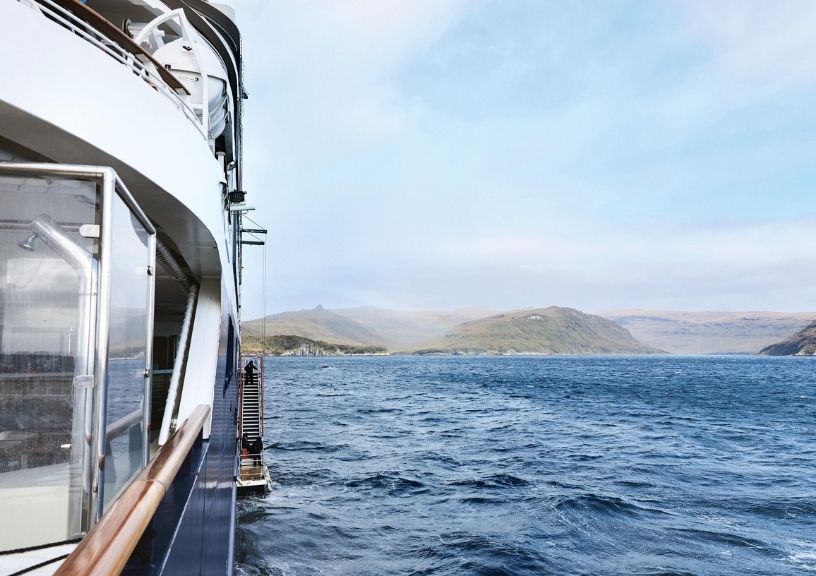
Circling back, we came to the colony of sea lions, which was a riot of fighting and fornication. All over the sand the giant males, dark brown and thickly maned at the neck, were jousting for supremacy. As they charged, they rode over the mewling pups, more interested in their next shot at procreation than the offspring of their last. As we stood on the dune behind the beach, a male climbed on top of a female who objected to his advances—she wailed and bit his neck. But there was no contest; he was four times her size.
When we left the island and headed north, the forecast was for 50-knot winds and 4.6-metre waves—rough, but no worse than we had experienced already. This turned out to be a wild underestimate. By the time the captain made his U-turn, the wind outside was blowing at 70 knots (a hurricane is anything over 64), and the waves were as high as 12 metres. Before I embarked on this trip I had been expecting to be seasick, and in Hobart I had stocked up on medication. But the ship is equipped with stabilisers—giant wings that stick out from the hull under the water to counteract the worst of the motion—and mercifully, even in such extreme conditions, the nausea never arrived. Free to enjoy the ride, I headed to the bar at the top of the ship. From there I watched the bow crashing through the waves, which were mountainous and granite-black. They slammed into the windows as though we were in a car wash mounted on a roller coaster.

For the next two days, we sheltered from the storm at Enderby Island. Our permit there only allowed for one landing, which we had already used. So, we were boat-bound. For me, waiting for the weather to clear was a chance to enjoy the ship’s pleasures. I had a massage in the spa and ran on the treadmill in the gym. One afternoon I went to an impromptu French class put on by a member of the crew. The rigours of the weather brought out a pleasing sense of irony in the expedition team. Springer gave a lecture entitled ‘Island of Despair’ on shipwrecks in the Subantarctics. “When ships travelled through this area,” he said dryly, “they sometimes simply disappeared with no record of what happened to them.”
The lecture was accompanied by a screening of Grafton: Perilous Adventure to the Mainland, a documentary about a ship that was wrecked in New Zealand’s Auckland Islands in 1864, when it was blown off its anchor during a storm and smashed to pieces on a reef. The crew of five survived as castaways, and two of them, Captain Thomas Musgrave and François Édouard Raynal, wrote best-selling memoirs that inspired Jules Verne’s novel The Mysterious Island.
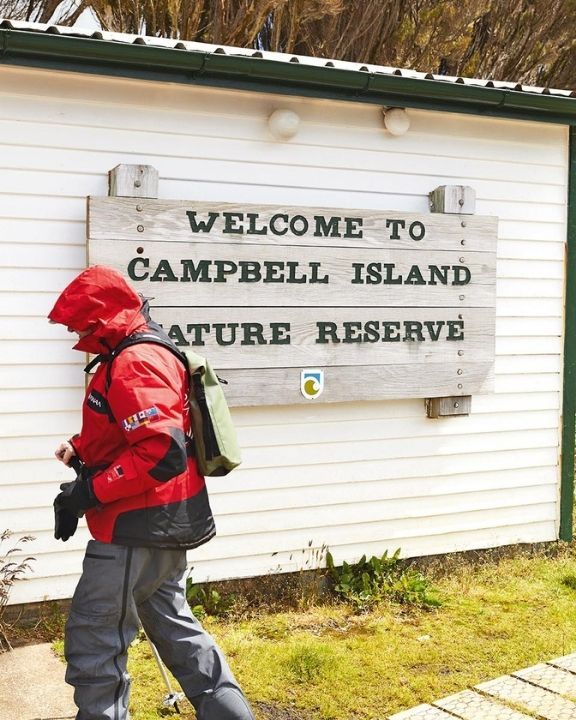
These distractions, though, couldn’t keep cabin fever away and an atmosphere of frustration began to settle over Le Lapérouse. Each day spent waiting was a day lost from the rest of our itinerary. Finally, on the third morning at Enderby, the wind began to soften and the sea began to calm. We were free to venture outside again. With a soft drizzle falling, I joined a Zodiac cruise around Musgrave Inlet, where we motored through the kelp beds and nosed our way into sea caves at the foot of the cliffs. Tui birds, small and oil-black, flew past us, flashing their iridescent tail feathers, and rock-hopper penguins burst from the rollers that swept gently up to the shore. After being cooped up and storm-battered, it was a relief to be moving again.
The two-day layover meant there was no time for the final stretch of our journey, around the New Zealand fjords. The weather had had its way. So we headed towards our final destination, Dunedin, a port on New Zealand’s South Island. But en route we would still pass by the Snares, the most pristine of all the Subantarctics.

As we sailed north, the climate warmed and the character of the islands changed. The Snares erupt from the sea in vertical granite cliff faces, yet compared with the treeless desolation of Macquarie, they seemed almost homey. Their jaggedness is soothed by the white flowers of the shore hebe plant, and the peaks of the islands are covered with tree daisies, a bushy species with pale-green leaves. Seals and sea lions rested on the kelp that clung to the rocks, and Snares crested penguins commuted up and down a granite slope from their colony at the top, where they could be seen roosting in the treetops.
The vertiginous cliffs of these islands offer no obvious landing sites, and establishing a settlement here proved harder than on any of the other islands we had visited. Whalers and sealers managed it for just three years before giving up. But as we cruised around the coves and inlets, they were the first islands I could imagine living on. Maybe it was simply because the sun had come out at last.
Fifteen-day expeditions from INR 7,89,758 per person, beginning in December 2022; ponant.com
To the Ends of the Earth: The polar cruises to book for 2022
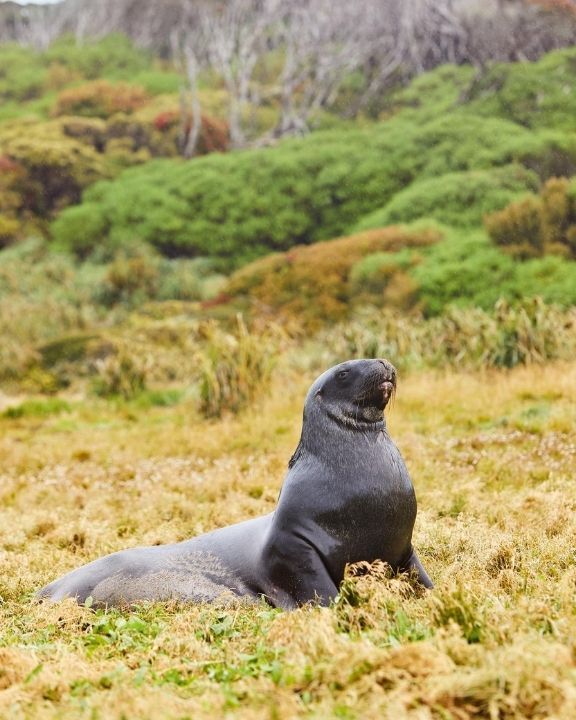
“We’re going to see a busy season in Antarctica,” predicts cruise expert Ashton Palmer (ashton@expeditiontrips.com), founder and president of Expedition Trips. That’s quite a change after a shortened 2019–2020 season and COVID-19 restrictions carrying into 2021. “People want to invest in experiences and do those ‘trips of a lifetime,’ ” Palmer says. To meet that demand, numerous polar-class ships will debut in the Southern Ocean.
A pair of new 378-passenger vessels, Viking Octantis and Viking Polaris (from INR 11,42,127 for 12 nights), will blend the feel of an expedition with the amenities of a more traditional ship. Guests can hang outdoors around lava-rock firepits on deck two or opt for lectures by geologists, botanists, and oceanographers.
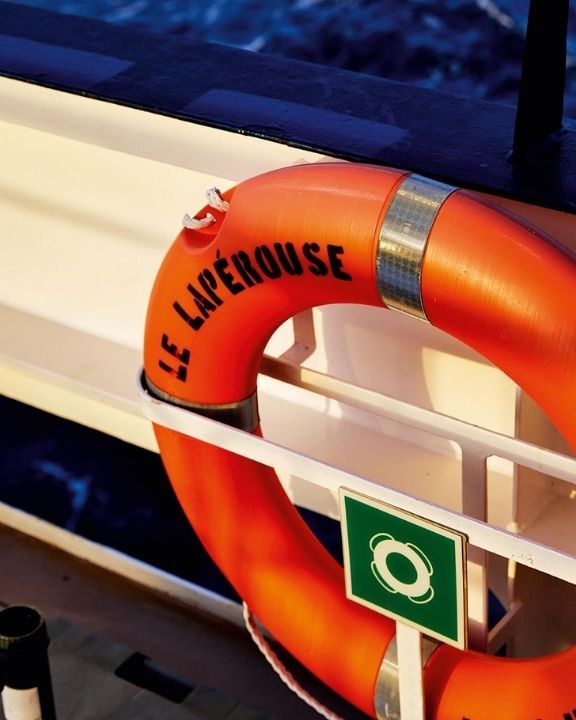
Lindblad Expeditions has also launched twin ships, National Geographic Resolution and National
Geographic Endurance (from INR 11,48,601 for 13 nights). Both 126- passenger vessels have a cutting-edge design known as an X-Bow that provides a smoother ride, better fuel efficiency, and reduced emissions.
The 12-passenger Nansen Explorer (from INR 24,10,691 for 12 nights) isn’t exactly new—it was once a Russian research ship—but it has been transformed into a luxury yacht, now operated by EYOS Expeditions.
Le Commandant Charcot (from INR 14,36,513 for 14 nights), the latest ship from Ponant, is a 270-passenger cruiser that recently cut through the ice to the geographic North Pole. As the season shifts south, the ship will, too, with trips to the Weddell Sea and even a 15-day itinerary designed to chase this December’s solar eclipse.
Related: Here’s Why A River Cruise Is The Perfect Way To Ease Back Into European Travel










